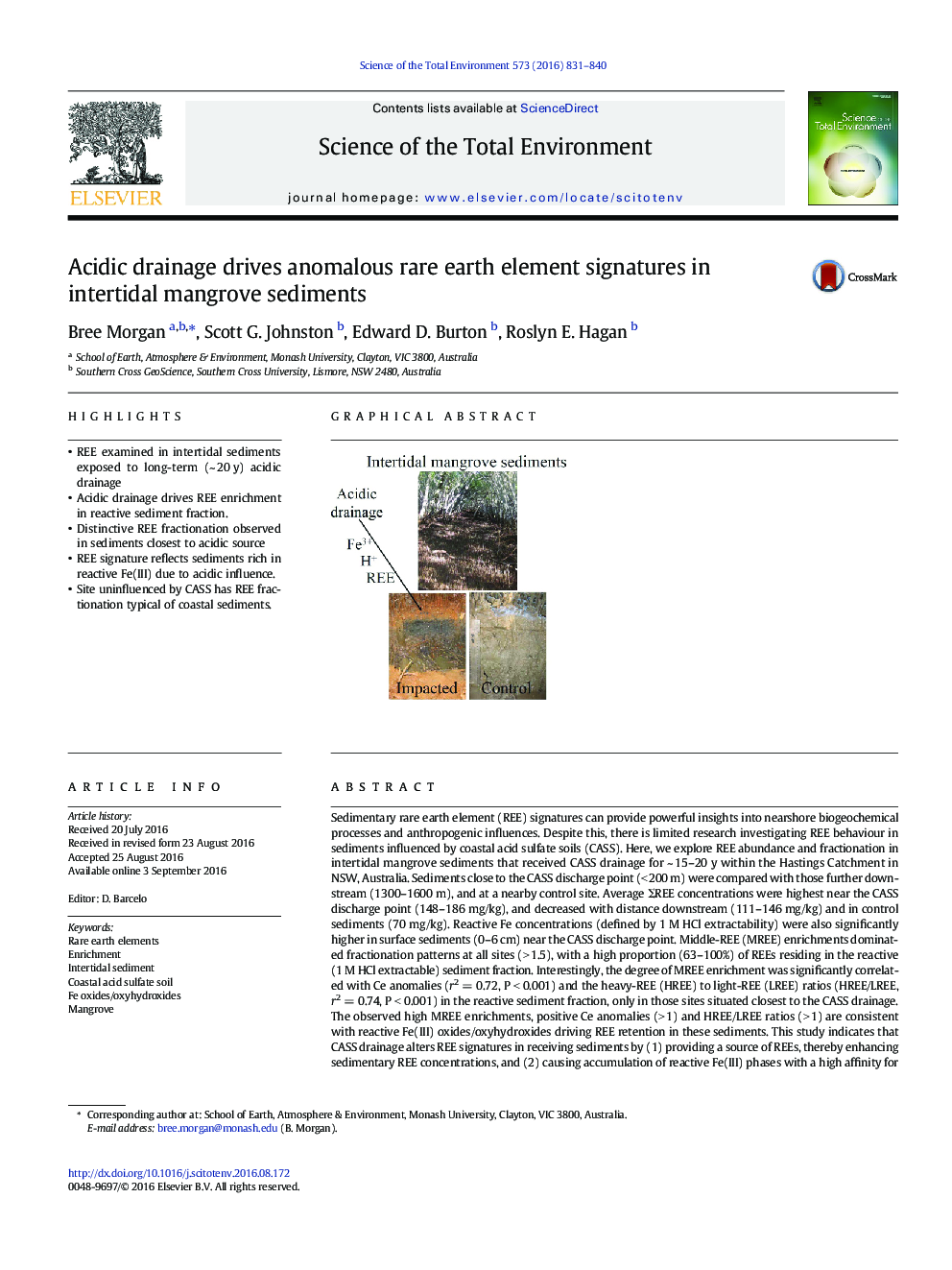| کد مقاله | کد نشریه | سال انتشار | مقاله انگلیسی | نسخه تمام متن |
|---|---|---|---|---|
| 6319884 | 1619718 | 2016 | 10 صفحه PDF | دانلود رایگان |
- REE examined in intertidal sediments exposed to long-term (~Â 20Â y) acidic drainage
- Acidic drainage drives REE enrichment in reactive sediment fraction.
- Distinctive REE fractionation observed in sediments closest to acidic source
- REE signature reflects sediments rich in reactive Fe(III) due to acidic influence.
- Site uninfluenced by CASS has REE fractionation typical of coastal sediments.
Sedimentary rare earth element (REE) signatures can provide powerful insights into nearshore biogeochemical processes and anthropogenic influences. Despite this, there is limited research investigating REE behaviour in sediments influenced by coastal acid sulfate soils (CASS). Here, we explore REE abundance and fractionation in intertidal mangrove sediments that received CASS drainage for ~ 15-20 y within the Hastings Catchment in NSW, Australia. Sediments close to the CASS discharge point (< 200 m) were compared with those further downstream (1300-1600 m), and at a nearby control site. Average ΣREE concentrations were highest near the CASS discharge point (148-186 mg/kg), and decreased with distance downstream (111-146 mg/kg) and in control sediments (70 mg/kg). Reactive Fe concentrations (defined by 1 M HCl extractability) were also significantly higher in surface sediments (0-6 cm) near the CASS discharge point. Middle-REE (MREE) enrichments dominated fractionation patterns at all sites (> 1.5), with a high proportion (63-100%) of REEs residing in the reactive (1 M HCl extractable) sediment fraction. Interestingly, the degree of MREE enrichment was significantly correlated with Ce anomalies (r2 = 0.72, P < 0.001) and the heavy-REE (HREE) to light-REE (LREE) ratios (HREE/LREE, r2 = 0.74, P < 0.001) in the reactive sediment fraction, only in those sites situated closest to the CASS drainage. The observed high MREE enrichments, positive Ce anomalies (> 1) and HREE/LREE ratios (> 1) are consistent with reactive Fe(III) oxides/oxyhydroxides driving REE retention in these sediments. This study indicates that CASS drainage alters REE signatures in receiving sediments by (1) providing a source of REEs, thereby enhancing sedimentary REE concentrations, and (2) causing accumulation of reactive Fe(III) phases with a high affinity for REEs. Together, these two factors drive the development of distinctive REE signatures in CASS-impacted sediments. The recognition of such signatures may provide a promising tool for identifying coastal sediments receiving anthropogenic CASS drainage inputs.
197
Journal: Science of The Total Environment - Volume 573, 15 December 2016, Pages 831-840
